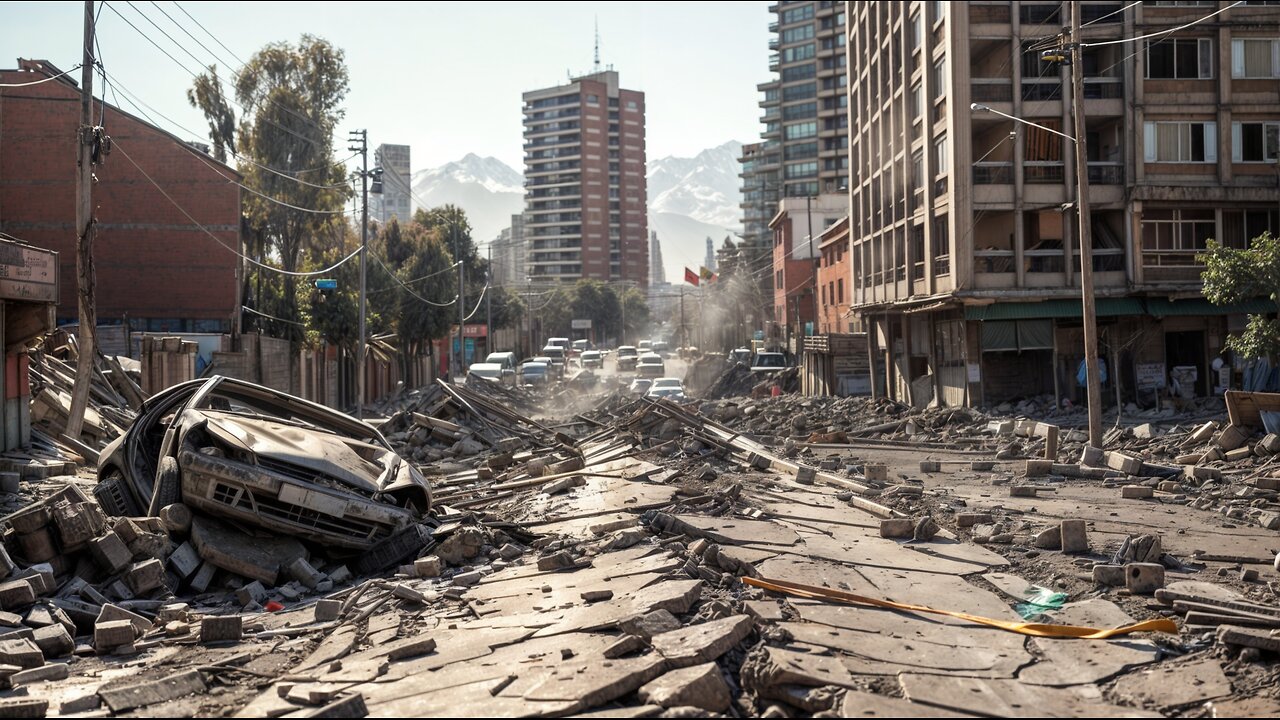Premium Only Content

Chile NOW! Could This 7.4 Magnitude Earthquake Be a Precursor to a Megaquake?
A powerful earthquake with a magnitude of 7.4 struck northern Chile on July 18 at 21:50 local time. According to the Chilean Seismological Center, the epicenter was located 20 km from the tourist town of San Pedro de Atacama at a depth of 165.5 kilometers.
Within 20 minutes after the initial tremors, the US National Tsunami Warning Center and the Hawaii Emergency Management Agency stated that a destructive tsunami across the Pacific Ocean was not expected.
Chilean authorities reported the death of a man in the city of Calama, the main urban center of the Atacama Desert. No significant structural damage was recorded in the region. Some roads were blocked by rocks and debris, and a bridge collapse was reported. Power outages were recorded.
Residents of the regions of Arica and Parinacota, Antofagasta, Atacama, Coquimbo, and Tarapacá were frightened by the strength of the quake, especially after talks began about the possibility that the earthquake was a "precursor" to a megaquake in the area. Aftershocks followed the earthquake, putting the population on high alert. Gabriel Gonzalez, a geologist from the Center for Disaster Risk Research, explained to Meganoticias de Chile that "these tremors are expected aftershocks following an event of this magnitude." According to their data, the most significant aftershocks numbered six, and their frequency and intensity are expected to decrease in the coming days.
Foreign tourists, unaccustomed to the region's seismic activity, were very frightened.
The earthquake was also felt in neighboring countries such as Argentina, Bolivia, Peru, and Brazil. In Brazil, the ground shook in the states of São Paulo and Minas Gerais, including the city of São Paulo. In Argentina, strong tremors were felt in Jujuy. Fortunately, no damage or casualties were reported in the provinces of Argentina.
Chile is one of the most seismically active countries in the world, where three tectonic plates converge: the Nazca, South American, and Antarctic plates. Currently, with the increase in seismic activity worldwide, more high-magnitude earthquakes are occurring in such seismically active regions. The statistics are grim: until the 2000s, 1-2 significant earthquakes were recorded per year, while today their number has increased eightfold.
The reasons for this surge in seismic activity in recent years are discussed in detail at the forum "Global Crisis. The Responsibility." Check out this information; it could save your life!
-
 53:06
53:06
AllatRa TV
17 days agoPowerful Earthquake in Kamchatka. ALLATRA's Warning Came True
1.1K4 -
 LIVE
LIVE
Lofi Girl
2 years agoSynthwave Radio 🌌 - beats to chill/game to
364 watching -
 2:19:32
2:19:32
Badlands Media
1 day agoDEFCON ZERO Ep. 005: False Flags, Cyber Fronts & Global Power Plays
134K51 -
 2:35:23
2:35:23
FreshandFit
6 hours agoWhy Black Men Don't Date Black Women Debate
26.5K28 -
 2:03:42
2:03:42
Inverted World Live
10 hours agoBigfoot Corpse Coming to the NY State Fair | Ep. 94
100K24 -
 6:16:23
6:16:23
SpartakusLIVE
11 hours ago$1,000 Pistol Challenge || #1 ENTERTAINER of The EONS Eradicates BOREDOM
75.6K2 -
 2:33:37
2:33:37
TimcastIRL
8 hours agoTrump Orders Review of Smithsonian For Being Woke & Out of Control | Timcast IRL
177K66 -
 3:09:10
3:09:10
Barry Cunningham
11 hours agoPRESIDENT TRUMP HAS TAKEN THE MONSTER AWAY FROM THE LEFT! HORROR STORIES WON'T WORK ANYMORE!
78.9K80 -
 1:29:55
1:29:55
WickedVirtue
6 hours agoLate Night Fortnite w/ Friends
48.8K -
 3:34:06
3:34:06
This is the Ray Gaming
6 hours ago $0.79 earnedCould you be? Would you be? Won't you be my RAYBOR? | Rumble Premium Creator
29.4K